Health
With whooping cough cases on the rise, do you need a booster vaccine?
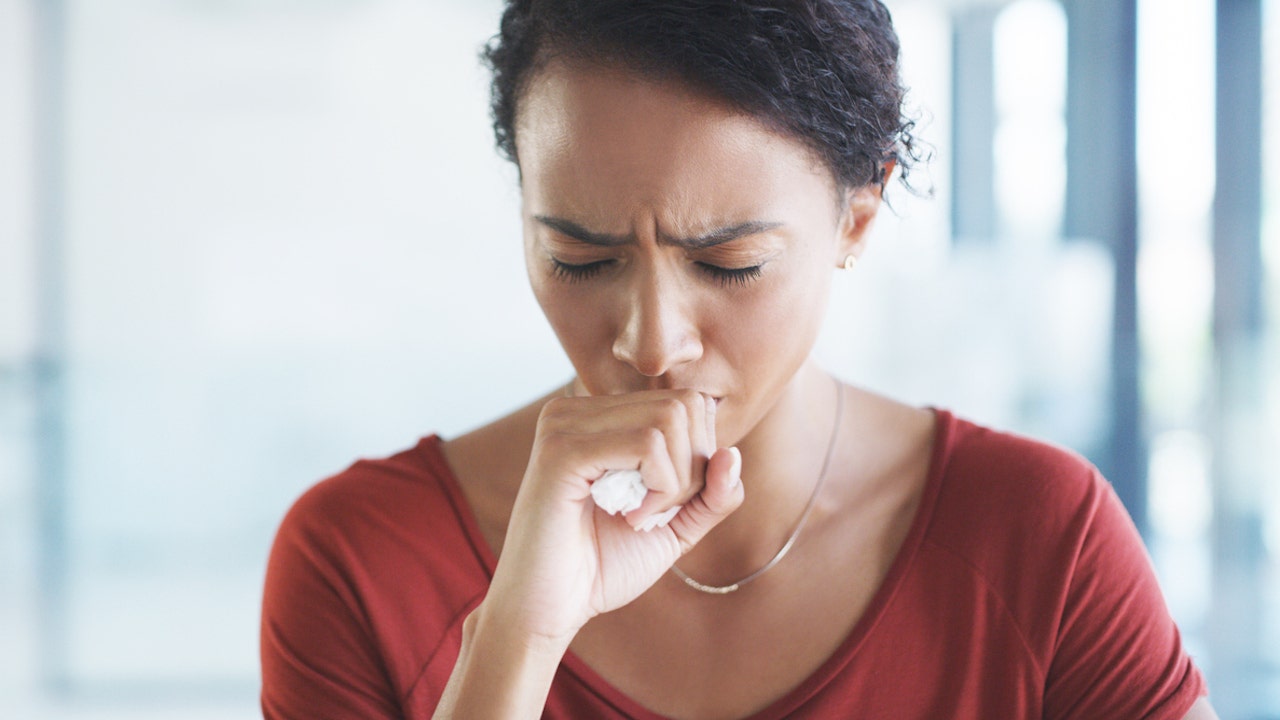
As whooping cough cases are surging globally, some may wonder if it’s necessary to get a booster.
Cases of the childhood respiratory disease also known as pertussis are surging internationally and in parts of the U.S., according to a recent report.
Bordetella pertussis is a type of bacteria that causes a very contagious respiratory infection that spreads from person to person through small respiratory droplets, per the CDC.
NEW YORK HEALTH OFFICIALS WARN OF WHOOPING COUGH OUTBREAK AMONG CHILDREN
“Reports indicate that whooping cough outbreaks are surging across Europe, Asia and parts of the United States, including Northern California, marking the largest uptick since 2012, with cases rising sharply since December,” Maggie Rae, president of the Royal Society of Medicine’s epidemiological and public health section in London, told Fox News Digital.
Bordetella pertussis is a type of bacteria that causes a contagious respiratory infection that spreads from person to person through small respiratory droplets, per the CDC. (iStock)
Prevalence of cases
In the U.K., there were an estimated 555 cases in January of this year and 913 cases in February — compared to 858 cases for all of 2023, according to the UK Health Security Agency.
Cases in China totaled more than 15,000 this January. That’s 15 times higher than the same time period last year, reports stated.
AMID CHILDHOOD PNEUMONIA OUTBREAKS, INFECTIOUS DISEASES EXPERT REVEALS KEY FACTS ABOUT ‘WHITE LUNG SYNDROME’
“Concerns are mounting in Europe, especially in the Netherlands, where 1,800 cases were reported in the first two weeks of April, leading to four deaths, with declining childhood vaccination rates cited as a possible cause by public health officials,” Rae said.
“This is a very important public health issue, and I would urge those members of the public who require a vaccine for pertussis to take this up.”
Whooping cough is mostly controlled in the United States, although “breakthrough cases” can occur in people who are fully vaccinated.
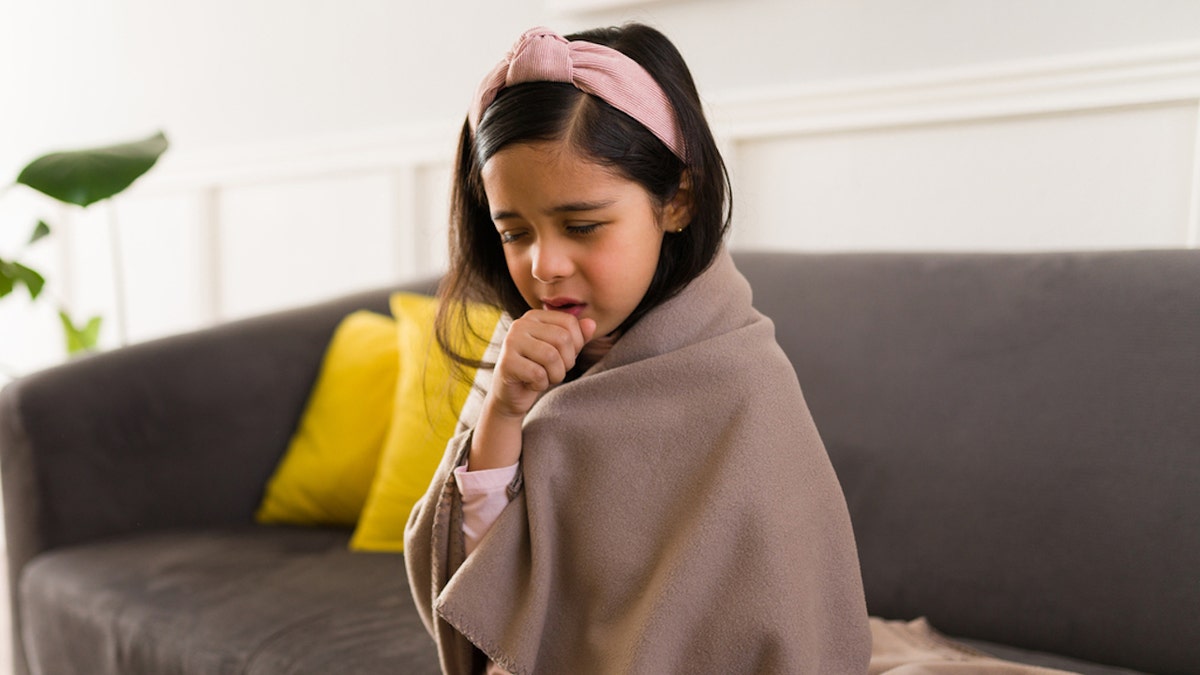
Cases of the childhood respiratory disease known as whooping cough or pertussis are surging internationally and in parts of the U.S., according to a recent report. (iStock)
Clusters of cases in certain parts of the U.S. are expected for this time of year, according to the Centers for Disease Control and Prevention (CDC).
There have been small “clusters” of cases of whooping cough in the U.S., extending from San Francisco to New York City.
CDC RECOMMENDS ADDITIONAL COVID VACCINE FOR ADULTS 65 AND OVER
A Catholic high school in San Francisco, California, has reported more than 12 cases since January, according to local reports.
The New York City Department of Health and Mental Hygiene estimated 244 cases from Oct. 1, 2023, to Jan. 31, 2024.
That’s a 200% increase compared to the same time period in the prior year, a recent health advisory stated.
“This is a very important public health issue.”
Most unvaccinated cases involved infants, while most vaccinated individuals were school-aged children.
A majority of adults had an unknown vaccination history, the advisory noted.
The U.S. typically has approximately 20,000 cases of pertussis per year. Yet as people donned masks and practiced physical distancing during the pandemic, annual cases dropped to 6,124 in 2020 and 2,116 in 2021, according to the CDC.
Symptoms and risk factors
Clusters of cases often occur where there are large groups of young people, such as child care centers and schools.
“The symptoms of pertussis are initially like a cold, with a runny nose, and progress to a cough,” Jennifer Duchon, M.D., hospital epidemiologist and director of antimicrobial stewardship at Mount Sinai Kravis Children’s Hospital in New York, told Fox News Digital.
Patients tend to develop a cough that can become severe — sometimes to the point of vomiting, Duchon said.

Health care providers typically test for the disease with a nasal swab. (iStock)
“The characteristic ‘whooping’ sound is a gasp that is made when trying to breathe after a long episode of coughing,” she added.
The cough can linger for weeks after a person catches pertussis.
When outbreaks occur, babies are at a high risk of getting sick and dying from the infection, health officials warn.
AS NEW JERSEY INVESTIGATES MUMPS OUTBREAK, EXPERTS SHARE WHAT TO KNOW ABOUT SYMPTOMS, PROTECTION
“Pertussis is most severe in infants 6 months of age or less, especially in infants who were born preterm or are not immunized,” Duchon said.
“Young infants can have a severe cough that impairs their ability to breathe, and can lead to episodes where they vomit, struggle to breathe or even cease breathing after bouts of coughing.”

Patients tend to develop a cough that can become severe — sometimes to the point of vomiting, a doctor said. “The characteristic ‘whooping’ sound is a gasp that is made when trying to breathe after a long episode of coughing.” (iStock)
Babies often won’t make that whooping sound, so a warning sign is when their face turns blue as they struggle to breathe, the CDC noted.
The infection can progress to bacterial pneumonia or a condition called pulmonary hypertension, in which heart function is affected by the disease, Duchon warned.
Treatment and prevention
Health care providers typically test for the disease with a nasal swab.
“If pertussis is caught early, patients can take an antibiotic called azithromycin, but this only helps make the disease less severe and does not cure the disease,” Duchon noted.
MEASLES VACCINATIONS GIVEN IN ’70S AND ’80S MAY HAVE WORN OFF BY NOW, DOCTOR WARNS
“If someone is exposed to pertussis and is at risk for severe disease or had a lot of contact with the ill person, doctors will sometimes recommend a short course of an antibiotic to act as a ‘prophylaxis’ against the disease.”
Currently, there are two kinds of vaccines for whooping cough available in the U.S., according to the CDC.
“The best way to prevent the disease is to make sure that all family members and health care workers are up-to-date on their vaccinations — not only for pertussis, but also other vaccine-preventable diseases,” Duchon told Fox News Digital.

“Children should get their primary series of vaccines at 2 months, 4 months and 6 months, and then at 15 months through 18 months, and at 4 years through 6 years,” a doctor advised. (iStock)
The DTaP vaccine protects against diphtheria, tetanus and pertussis.
The Tdap vaccine protects against tetanus, diphtheria and pertussis.
The DTaP vaccine is for babies, while the Tdap “booster” vaccine is for pre-teens, teenagers and adults, per the CDC.
“Before vaccination became available, the disease used to be a major cause of mortality in young children,” Duchon noted.
Specific vaccine recommendations
Due to the high risk to babies, the CDC recommends that pregnant women receive the Tdap vaccine during the 27th and 36th week of pregnancy, regardless of their prior vaccination status.
This prevents 78% of cases in infants younger than 2 months old and decreases hospitalization by 90% for infants younger than 2 months old who are infected with pertussis, according to the CDC.
“Everyone in close contact with a very young infant should be vaccinated against pertussis.”
It is recommended that babies get immunized with the DTaP vaccine series, which provides immunity for three separate infectious diseases — diphtheria, tetanus and pertussis.
“Children should get their primary series of vaccines at 2 months, 4 months and 6 months, and then at 15 months through 18 months, and at 4 years through 6 years,” Duchon advised.
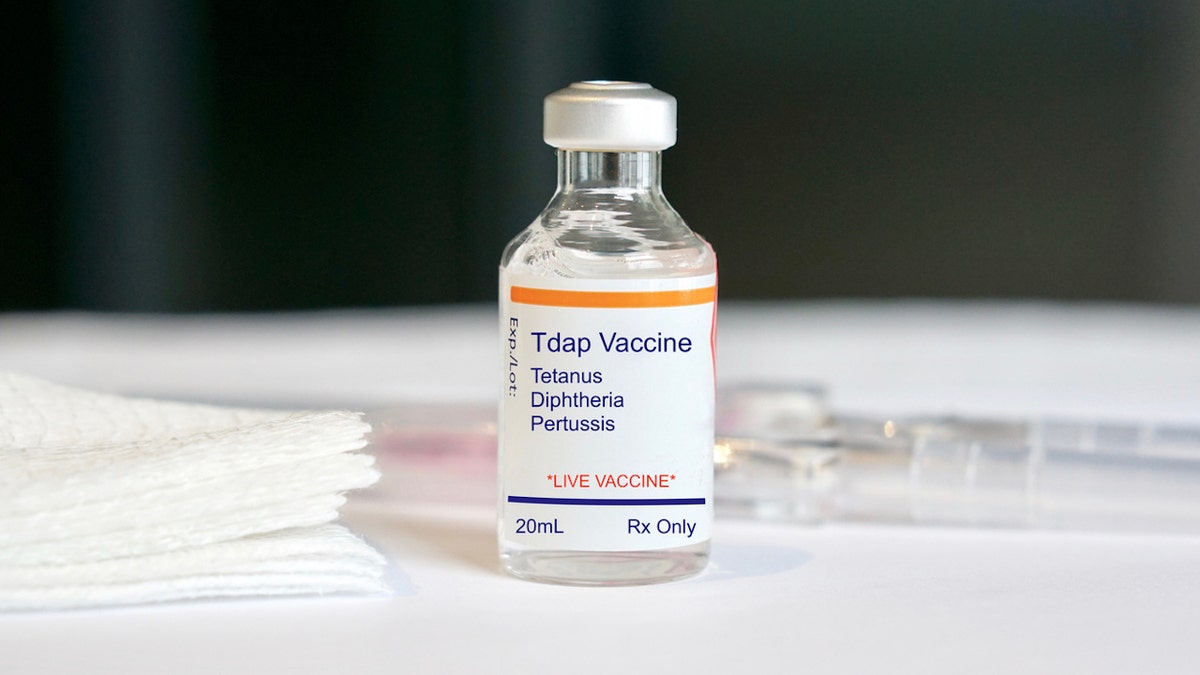
The Tdap vaccine protects against tetanus, diphtheria and pertussis. (iStock)
Adolescents should receive the Tdap vaccine at 11 to 12 years old to boost their immunity, the CDC recommends.
In children who receive the full series, 98% have full protection against the infection within a year after the last dose, but the response decreases to 71% after five years, the agency states.
CLICK HERE TO SIGN UP FOR OUR HEALTH NEWSLETTER
As pertussis immunity wanes from the original vaccination series in childhood, adults should get regular boosters, Monica Gandhi, M.D., professor of medicine and an infectious disease specialist at UCSF/ San Francisco General Hospital, told Fox News Digital.
“Although the exact frequency of the need for booster vaccination has not been precisely worked out, we recommend a tetanus vaccine every 10 years,” she said.

The DTaP vaccine protects against diphtheria, tetanus and pertussis. (iStock)
As the pertussis vaccine comes formulated with tetanus immunization in the form of the Tdap vaccine, many practitioners recommend a pertussis vaccine every 10 years when the booster for tetanus is provided, according to Gandhi.
Other providers may only recommend routine pertussis boosters in certain circumstances, such as for pregnant women or adults who have never been vaccinated, Duchon added.
“Everyone in close contact with a very young infant should be vaccinated against pertussis,” she said.
“We call this strategy ‘cocooning,’ where those around the baby form a protective wall against the disease.”
For more Health articles, visit www.foxnews.com/health.

Health
Over 50 and Can't Lose Weight? What to Know About Sarcopenia + How to Fix It With Protein
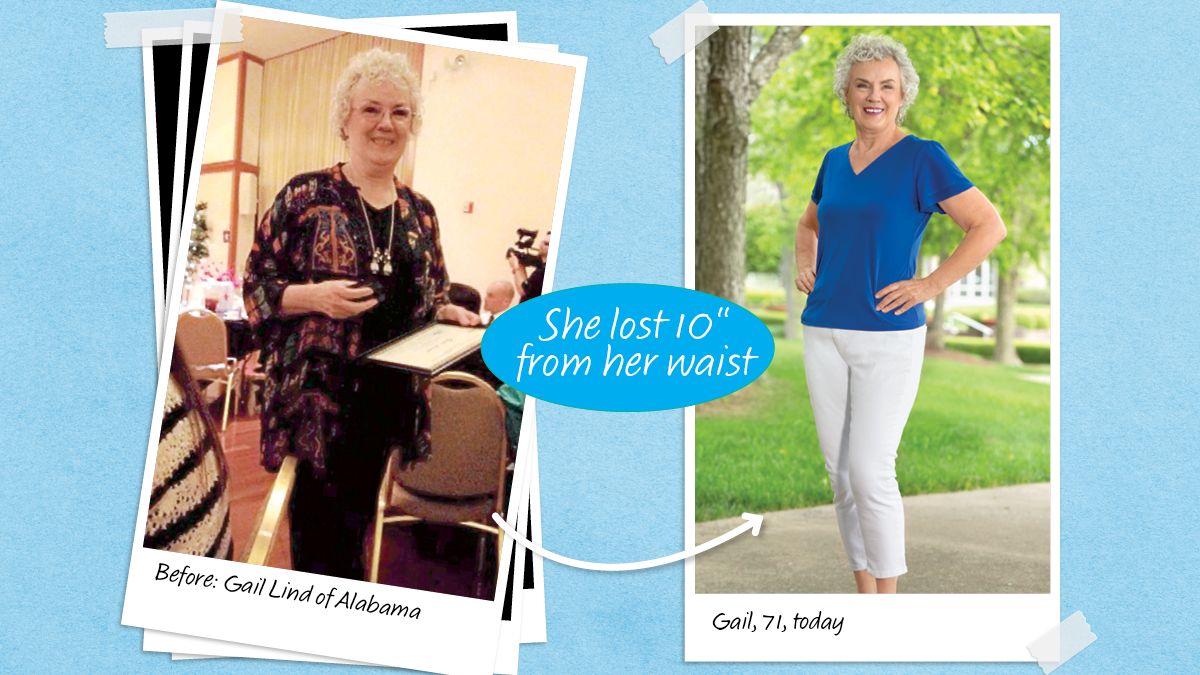
Sign Up
Create a free account to access exclusive content, play games, solve puzzles, test your pop-culture knowledge and receive special offers.
Already have an account? Login
Forgot your password?
Get back to the Sign In
Use left and right arrow keys to navigate between menu items.
Use escape to exit the menu.
Health
Dairy farm worker infected with bird flu; CDC urges workers to wear protective gear

CDC issues alert over bird flu case
Fox News medical contributor Dr. Marc Siegel on what to know about bird flu and why it is important to not look directly at the solar eclipse without proper glasses
The Texas dairy farm worker infected with H5N1 bird flu was not wearing respiratory or eye protection and had been exposed to cattle that appeared to have the same symptoms as those in a nearby farm with a confirmed outbreak of the virus, according to new details on the case released on Friday.
The details, reported online in the New England Journal of Medicine, underscore the risk to farm workers in the ongoing outbreak among U.S. dairy cattle and the need to wear protective gear to avoid infection.
The outbreak – the first in cattle – is so far known to have infected 36 dairy herds in nine states.
AMID BIRD FLU SPREAD, EXPERTS REVEAL IF IT’S SAFE TO DRINK MILK: ‘INDIRECT CONCERN’
Infection by the bird virus is rare in humans, and the dairy worker’s case, first reported in March, represents only the second known human infection in the United States.
It follows a worrisome spread of the virus in a variety of mammal species, raising concerns that widespread exposure of people could cause the virus to spread more easily among the population and spark a global pandemic.
A Texas dairy farm worker had not reported any contact with sick or dead birds or other animals, but did have close exposure with sick dairy cows. (Reuters/Jim Vondruska/File Photo)
The U.S. Centers for Disease Control and Prevention (CDC) in the report said the farm worker developed a serious infection in his right eye known as conjunctivitis, or pink eye, but had no signs of respiratory infection or fever.
The worker had not reported any contact with sick or dead birds or other animals, but did have close exposure with sick dairy cows, with symptoms such as decreased milk production, reduced appetite and lethargy.
The worker had been wearing gloves but no respiratory or eye protection.
The CDC is urging farmers, workers, and emergency responders to wear appropriate protective gear when in direct or close physical contact with sick birds, livestock, feces, raw milk or contaminated surfaces.
An analysis of the outbreak released on Thursday by the U.S. Department of Agriculture suggests the virus has been circulating in U.S. dairy cows for about four months before being reported on March 25.
Preliminary tests of milk, baby formula and other dairy products suggests they are safe to consume, according to the FDA.
Health
Are noise-canceling headphones hazardous to your health? Audiology experts share warnings
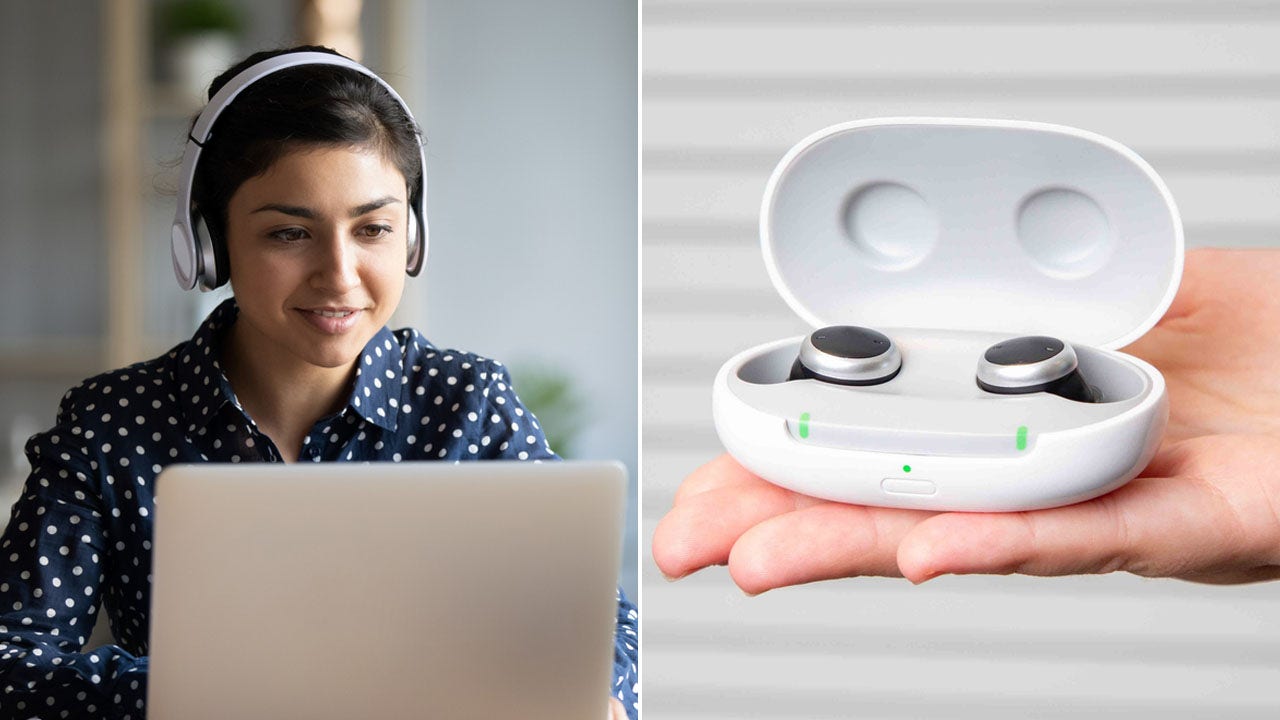
Noise-canceling earbuds and headphones can be helpful when you need silence on demand — but could they be hazardous to your health?
The technology has grown in popularity among people who need to eliminate auditory distractions — background chatter, loud children or traffic noise. Yet some experts claim that blocking out the sounds of your surroundings can put you at risk.
“Technology often provides convenience at the cost of awareness,” Josh Gordon, head of innovation at the Singapore technology company Geonode, told Fox News Digital.
FITNESS CLASS TOO LOUD? WHAT TO KNOW ABOUT PROTECTING YOUR HEARING HEALTH
“Noise-canceling earbuds may bring welcome silence, but they might also mask vital sounds that could save your life.”
Generally, good noise-canceling headphones can reduce noise by 20 to 40 decibels (dB), according to Gordon.
Noise-canceling earbuds and headphones can be helpful when you need silence — but some experts say they can be hazardous to your health. (iStock)
“There are positives and negatives to every technology,” Dr. Ruth Reisman, a clinical audiologist and hearing aid dispenser in New York State, told Fox News Digital.
“There can be some negative side effects to wearing noise-canceling headphones, including the reduction of awareness of [people’s] surroundings.”
ASK A DOC: ‘WHY ARE MY EARS RINGING, AND SHOULD I SEE A DOCTOR?’
One of Reisman’s colleagues recently did a study on this topic, she said.
“It was found that in addition to the volume of the media, the exposure and time of usage can also impact the patients’ hearing,” she noted.
This can potentially result in hearing damage and an “auditory processing challenge,” according to Reisman.

Generally, good noise-canceling headphones can reduce noise by 20 to 40 decibels, an expert noted. (iStock)
Joel Smith, a California-based audio expert and founder of the music hub AllAxess.com, agreed that noise-canceling headphones can impact hearing if they’re not used properly.
“Blasting the volume for too long can cause noise-induced hearing loss, ringing in the ears called tinnitus or even make it harder to process and distinguish sounds clearly over time,” he told Fox News Digital.
HEARING LOSS MORE LIKELY TO AFFECT RURAL AMERICANS AND MEN, NEW STUDY SHOWS
Constant exposure to loud noise can damage the inner ear hair cells that send sound signals to the brain, according to Smith.
“As those hair cells deteriorate from the loud noise, it makes it harder for your brain to properly interpret speech, background noise and other subtle sounds,” he said.
“It’s like your auditory processing gets muffled or desensitized.”

Noise-canceling earbuds or headphones can be used safely, “as long as they are set at an appropriate volume and not used for extended periods of time,” an expert said. (iStock)
Another risk, according to Smith, is that earbuds that aren’t cleaned regularly can trap moisture and bacteria, increasing the risk of ear infections.
“Some studies also suggest that excessive headphone use might affect your balance and spatial awareness, since you’re not relying on natural sound cues as much,” Smith added.
Safe usage tips
Noise-canceling headphones have their benefits, experts agree.
They can be helpful for people who have hyperacusis (sensitivity to noise) or those who have autism, Reisman advised.
“This can often make a noisy or disorienting environment tolerable or accessible to individuals with these challenges,” the doctor said.
EAR INFECTIONS IN YOUNG CHILDREN COULD LEAD TO DELAYED SPEECH FOR THEM, STUDY FINDS
Noise-canceling earbuds or headphones can be used safely, Reisman said — “as long as they are set at an appropriate volume and not used for extended periods of time.”
Research shows that anything below 80 decibels is considered a safe volume, the doctor noted, with usage ideally limited to no more than two to three hours per day.

Constant exposure to loud noise can damage the inner ear hair cells that send sound signals to the brain, according to an expert. (iStock)
“The question is how to actually measure the amount of decibels at the level of the eardrum,” she said.
“You can potentially go to an audiologist and have [the expert] do a real ear measure, or use a sound level meter at the level of the ear to assess the intensity.”
Some phones also offer some guidance on safe volume levels, Reisman added.
CLICK HERE TO SIGN UP FOR OUR HEALTH NEWSLETTER
“I don’t think people need to avoid [noise-canceling headphones] completely, but you’ve got to use them responsibly,” Smith said.
He recommends following the 60/60 rule, which means keeping the volume at 60% or less and taking a break every 60 minutes to give your ears a rest.

“I don’t think people need to avoid [noise-canceling headphones] completely, but you’ve got to use them responsibly,” an expert said. (iStock)
“Be extra cautious in loud environments, since you might crank it up way too high to overcome that background noise,” he advised.
Smith recommended taking regular breaks and keeping volumes moderate to prevent auditory fatigue and preserve healthy hearing into older age.
“Technology is a powerful tool,” Gordon added.
“But like any tool, understanding its limitations and using it responsibly is key to staying safe.”
For more Health articles, visit www.foxnews.com/health.
-

 News1 week ago
News1 week agoLarry Webb’s deathbed confession solves 2000 cold case murder of Susan and Natasha Carter, 10, whose remains were found hours after he died
-

 News1 week ago
News1 week agoFirst cargo ship passes through new channel since Baltimore bridge collapse
-

 World1 week ago
World1 week agoHaiti Prime Minister Ariel Henry resigns, transitional council takes power
-

 World1 week ago
World1 week agoSpanish PM Pedro Sanchez suspends public duties to 'reflect'
-

 World1 week ago
World1 week agoUS secretly sent long-range ATACMS weapons to Ukraine
-

 News1 week ago
News1 week agoAmerican Airlines passenger alleges discrimination over use of first-class restroom
-

 Movie Reviews1 week ago
Movie Reviews1 week agoHumane (2024) – Movie Review
-

 Education1 week ago
Education1 week agoVideo: Johnson Condemns Pro-Palestinian Protests at Columbia University















